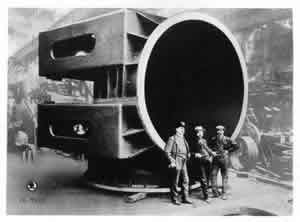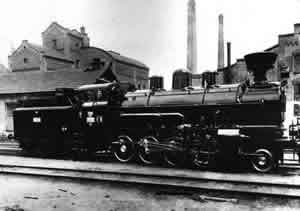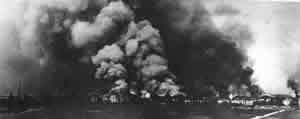|
History of TS Plzen

|
|
|
TS Plzen is a successor company of the huge Skoda
concern which split into numerous specialized companies after the
fall of communism in 1990. (However, physically all these successor
companies continue to be located in the same place, in the city
of Plzen around the Tylova Street within the compounds of the industrial
complex of Skoda).The history of TS Plzen and of Skoda reaches back
to mid 19th century.
|
|
|
|
 |
In 1859,
Count Wallenstein-Vartenberk set up a branch of his foundry and engineering
works in Plzeň. The output of the plant, employing over a hundred
workers, included machinery and equipment for sugar mills, breweries,
mines, steam engines, boilers, iron bridge structures, and railway
facilities. In 1869, the plant was taken over by Emil Škoda, an industrious
engineer and dynamic entrepreneur.
<-- Emil Škoda (1839 - 1900), founder of the Škoda Works in Plzeň
|
|

 |
Škoda was quick to
expand business, and in the 1880s founded what was then a very modern
steelworks capable of delivering castings weighing dozens of tons.
Steel castings and, later, forgings for larger passenger liners and
warships went on to rank alongside the sugar mills as the top export
branches of Škoda's factory.
<-- Casting of the rudder frame for the
Japanese warship Mikasa (1900)
|

 |
In 1899,
the ever expanding business was transformed into a joint-stock company,
and before the First World War Škoda Works became the largest arms
manufacturer in Austria-Hungary. It was a navy and army contractor,
mainly supplying heavy guns and ammunition.
<-- Guns for the Austro-Hungarian navy (1904)
|

 |
Exports
included castings, such as part of the piping for the Niagara Falls
Power Plant or for the Suez Canal sluices, as well as machinery for
sugar mills in Turkey, breweries throughout Europe, and guns for the
Far East and South America.
m
<-- Casting of part of the piping for
the Niagara Falls Power Station (1905)
|

 |
The First World War
brought a drop in the output of peacetime products. Huge sums were
invested into expanding production capacities. By this time, Škoda
Works already held a majorities in a number of companies in the Czech
Lands and abroad that were not involved in arms manufacture. In 1917,
the company had 35,000 employees in Plzeň alone.
<-- 380 mm calibre mortar in firing position (1916)
|

 |
Following the emergence
of the Czecho-Slovak Republic in 1918, in the complex economic conditions
of post-war Europe the company was transformed from what was exclusively
an arms manufacturer into a multi-sector concern. In addition to traditional
branches, the production programme embraced a number of new concepts,
such as steam (and later electric) locomotives...
<-- Locomotives for Romania State Railways
(1921)
|

|
...freight and passenger
vehicles...
|
|
|
|
|
The luxury ŠKODA - HISPANO
SUIZA for President T.G.
Masaryk (1926)
|
|
|
ŠKODA 606
truck in Iran (1936) |
|
|
|

|
...aircraft, ships, machine
tools, steam turbines, power-engineering equipment, etc.
|
|
|
|
|
Casting of the rudder
frame for
the French passenger
ship Normandie (1933) |
|
Turboset at Ervěnice
Power
Station (1929) |

In 1923, the company's world-famous registered trademark
- the winged arrow in a circle - was entered in the Companies Register.
The deteriorating political situation in Europe saw arms production
rise again in the mid-thirties.
|
|
|
|
|
AVIA B 534 fighter
plane for
the Czechoslovak Army (1933) |
|
150 mm calibre
howitzer 16/19 (1934) |

 The
Second World War and the company's forced integration into the German
weapons programme led to serious damage at the Works themselves (70%
of the company complex was destroyed by Allied bombing in April 1945)
and the loss of several foreign markets. The
Second World War and the company's forced integration into the German
weapons programme led to serious damage at the Works themselves (70%
of the company complex was destroyed by Allied bombing in April 1945)
and the loss of several foreign markets.
<-- Škoda Works after the bombing raid
of 25 April 1945.
|
|

In 1945, the company was nationalized.
Škoda Works was gradually split up into different sections (e.g. the
car works in Mladá Boleslav, the aircraft plant in Prague, factories
in Slovakia, and other plants producing food-industry equipment).
The company's main task now was to produce equipment for heavy engineering,
capital construction in the industrial sector, public transportation,
and power engineering. Most exports were headed towards the Eastern
Bloc.
|
|
|
|
|
|
|
|
|
|
Electric locomotive capable
of
8,000 KW output and a speed of
200 kph, built for the USSR (1977)
|
|
Mělník III Thermal Power Station,
with a 500 MW turboset (1981)
|
|
|
|
|
|
|
|
The ŠKODA WD 200
horizontal drilling and
milling machine won the
Grand Prix at Expo 58
in Brussels
|
|
|
|
|
|
|
|
|
|
|
|
|
|
|
|
|
|
|
|
|
|
|
|
 |
 |
|
|
 |
 |
|
|
|

Following the change in political climate in 1989,
ŠKODA started along the path of privatization, and used this time
to come up with an optimal production programme, make new business
contacts, and look for markets other than those that had so far been
its priority (and only) markets, i.e. the Comecon countries and the
Soviet Union, which collapsed after 1989.
|
|
|
|
|
14 Tr E trolley-bus
for urban
transportation in Dayton, Ohio (1996) |
|
Astra low-floor
tram (1997)
|

In 1992, the company was privatized by the
so-called Czech method. It began expanding its production activities
(e.g. by acquiring the TATRA and LIAZ vehicle works and constructing
a plant to produce aluminium drinks cans). This expansion put the
company's financial stability in jeopardy. In 1999, it concluded a
standstill agreement with its main creditor banks, and restructuring
of the entire capital structure of the Škoda group was launched. The
result was legal and financial stability at the company. Now the sectoral
restructuring of the production companies in the group is under way.
In April 2000, ŠKODA HOLDING a.s. took over at the helm, controlling
primary nineteen subsidiaries and most product lines.
|
|

